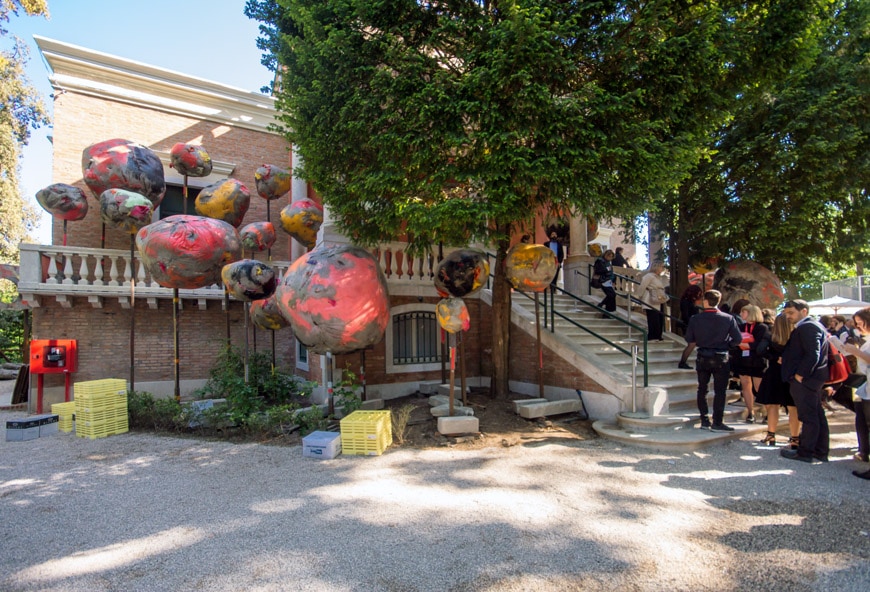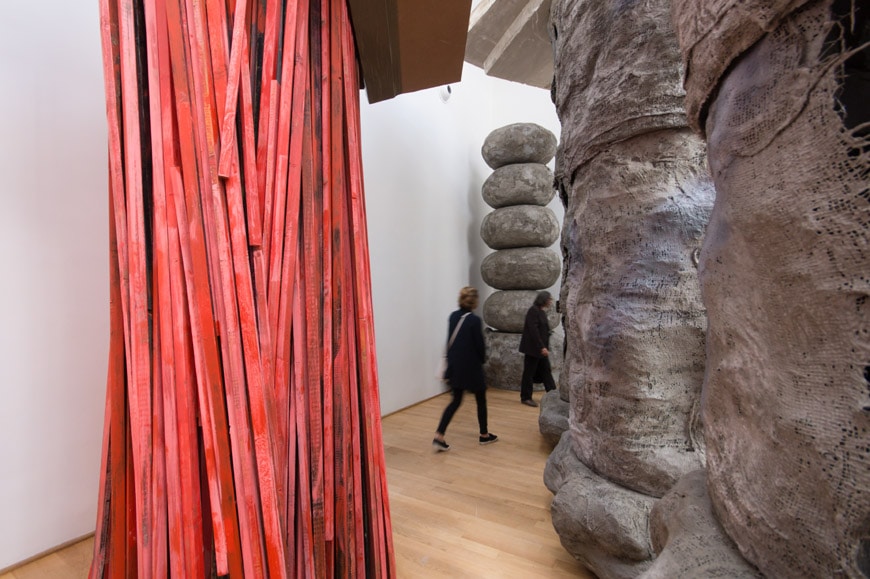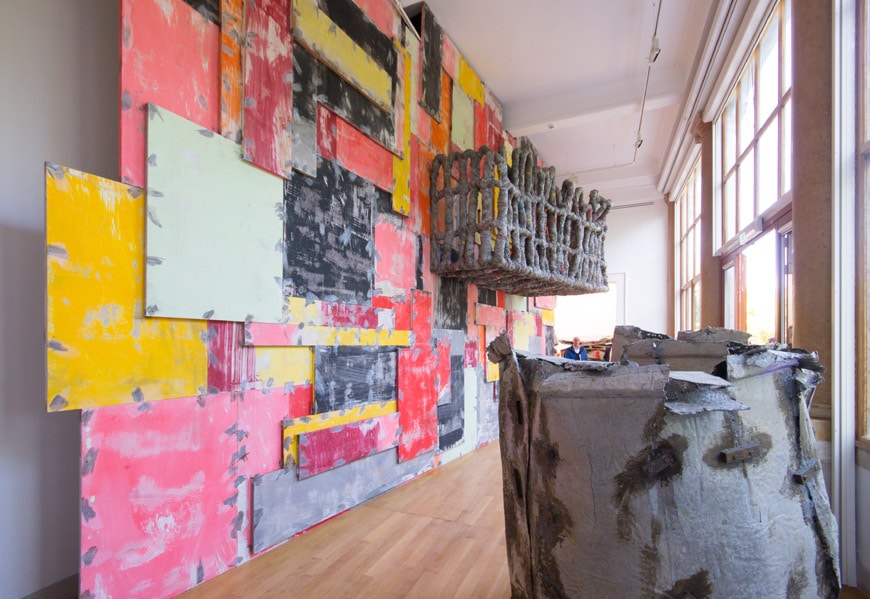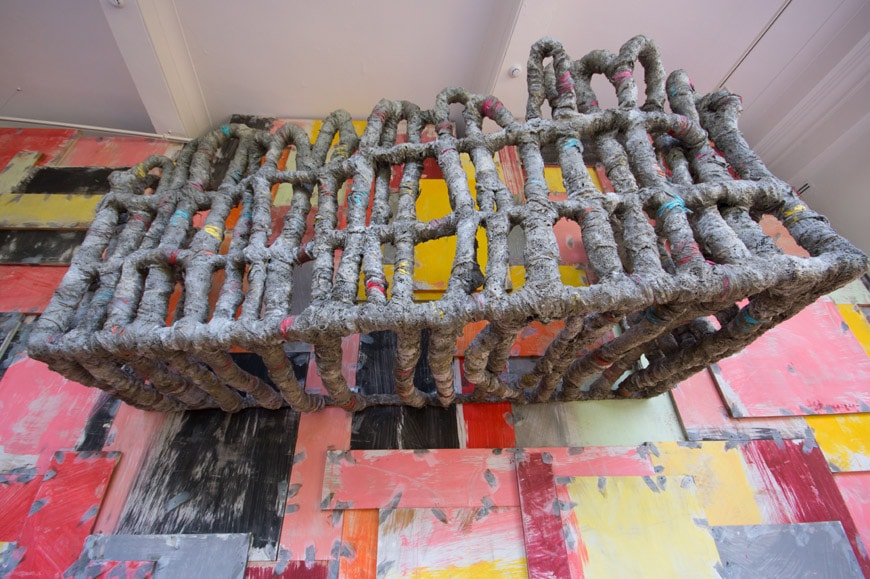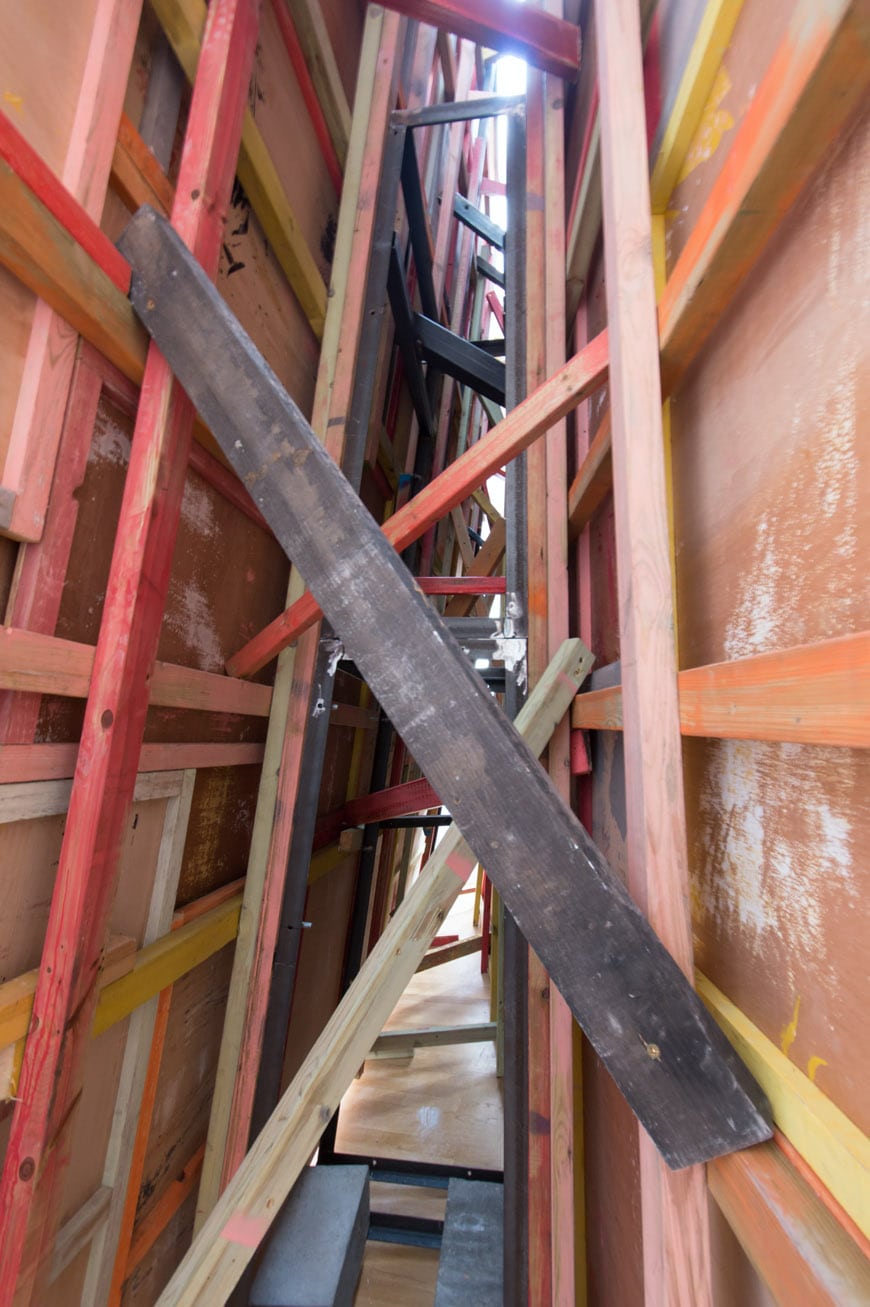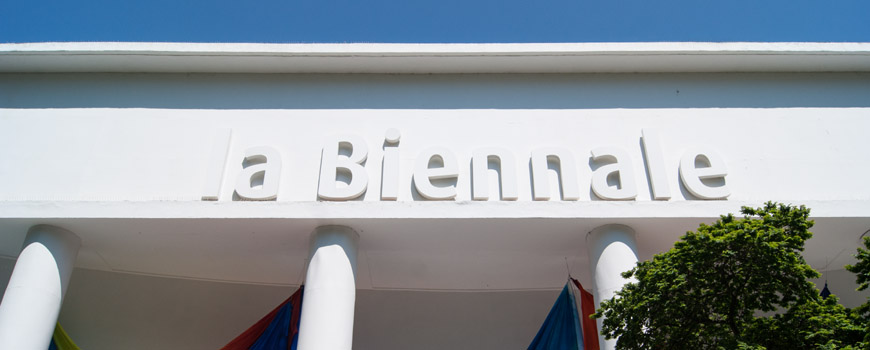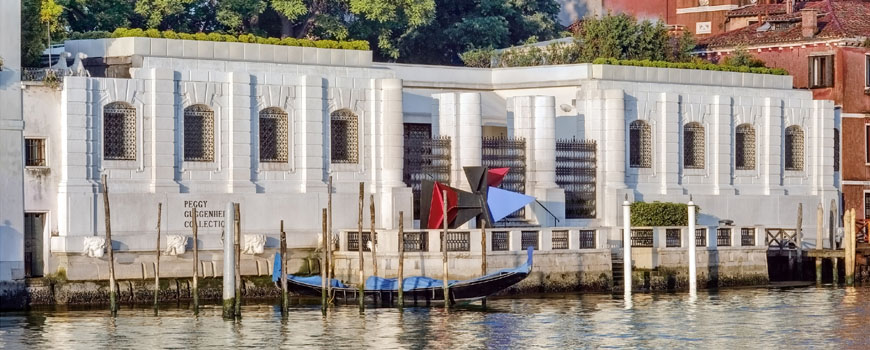Phyllida Barlow – Folly | UK at the Venice Art Biennale 2017
The British Pavilion at the Venice Art Biennale
Commissioner: The British Council - Emma Dexter
Phyllida Barlow, Folly; the British Pavilion at the 57th Venice Art Biennale, 2017; photo © Inexhibit 2017
Phyllida Barlow – Folly | The British pavilion at the Venice Art Biennale 2017
At the 2017 Venice Art Biennale, the British Pavilion presents Folly, a site-specific sculptural installation by Phyllida Barlow. The exhibition in the pavilion is, as usual, commissioned by the British Council through its Visual Arts Director, Emma Dexter.
Phyllida Barlow (b. 1944, Newcastle upon Tyne) is world-renowned for her impressive abstract sculptural works in which cheap materials – such as concrete, timber, and fabric – and reused elements are transformed into sumptuously mysterious and disquieting sculptures.
For the British exhibition in Venice, Barlow has created a multiform installation she entitled Folly as a reference to both a type of flamboyant architectural decorative element and a foolhardy state of mind.
The work constantly plays and interacts with the architecture of the pavilion itself, beginning from the exterior, where Barlow places a group of bright-colored, almost comical bubbles (or, more precisely, giant baubles, as the artist defines them) that somehow “demystify” the bold, neoclassical forms of the building.
The exterior of the British Pavilion with a group of Barlow’s “baubles”; photo © Inexhibit 2017
Inside the pavilion, a sequence of monumental sculptures fills the rooms as probes are sent to explore those spaces. Such large objects often alternate a dark-gray rough appearance, somewhat resembling that of urban infrastructures and industrial buildings, with brightly and warmly colored surfaces creating a dynamic contrast and a sense of constant surprise and discovery.
Four large columns are placed at the center of the entrance room, surrounded by other tall objects, either gray or colored in an intense red. The columns are torn to reveal their internal structure and the “banality of how they were made” as Phyllida Barlow says.
Overall, all the objects in this room are somewhat reminiscent of ancient architecture and megalithic monuments.
Phyllida Barlow, Folly; views of the sculptural objects installed in the entrance room of the British Pavilion, Venice; photos © Inexhibit 2017
The dialogue between the architecture of the pavilion and Barlow’s installations continues in the next room, which is bisected and dominated by a huge sloping wall – made of a timber structure clad with an array of colored panels – with a simulacrum of a balcony on one side, encrusted as it was recovered from the seabed of the Venice lagoon, and a series of suspended objects on the opposite side. Again, the public can see how the internal structure of the installation, its “entrails”.
Phyllida Barlow, Folly; views of the two-sided sloping wall; photos © Inexhibit 2017
Folly also includes a series of more or less large sculptures which often evoke familiar objects, such as the giant axle which stands in the middle of one of the smaller rooms.
All objects on view underline and question the somewhat “authoritarian” nature of the pavilion – while at the same time, they invite the visitor to explore its space – transformed by Barlow into a playful, labyrinthine, somewhat obsessive yet definitely friendly place.
Phyllida Barlow, Folly; the sculpture “axle” installed in the British Pavilion at the 2017 Venice Art Biennale; photo © Inexhibit 2017
copyright Inexhibit 2024 - ISSN: 2283-5474


